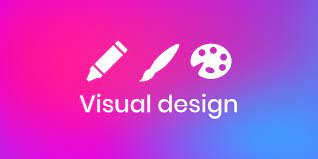The Power of Visual Design
Visual design is a potent tool that influences how we perceive the world around us. From the moment we wake up to the advertisements we see, the websites we visit, and the products we use, visual design plays a crucial role in shaping our experiences.
At its core, visual design is about communication. It goes beyond aesthetics and encompasses elements such as colour, typography, layout, and imagery to convey messages effectively. A well-crafted design can evoke emotions, tell stories, and engage viewers in ways that words alone cannot.
One of the key strengths of visual design is its ability to simplify complex information. Through strategic use of visuals, designers can distil intricate concepts into digestible chunks that are easy to understand. This clarity enhances comprehension and retention, making information more accessible to a wider audience.
Moreover, visual design has the power to create memorable experiences. Whether it’s a striking logo that captures a brand’s essence or an immersive website that guides users seamlessly through content, thoughtful design leaves a lasting impression on individuals.
In today’s digital age, visual design plays an increasingly vital role in user experience. Websites and apps with intuitive interfaces and visually appealing layouts tend to attract and retain users better than those with outdated or cluttered designs. Designers must consider not only how something looks but also how it functions and how users interact with it.
Ultimately, visual design is a dynamic field that continues to evolve alongside technological advancements and changing trends. As designers push boundaries and experiment with new techniques, the impact of visual design on our lives will only grow stronger.
Visual Design Versus Graphic Design: Exploring the Differences
The Role of Visual Design in User Interface (UI) Development
4. Illustrating Visual Design: A Showcase of Examples
- What are the basics of visual design?
- What is visual design vs graphic design?
- What is visual design in UI design?
- What are the examples of visual design?
- What are 5 visual designs?
What are the basics of visual design?
Understanding the basics of visual design is essential for creating compelling and effective visual communication. The fundamentals include principles such as balance, contrast, alignment, hierarchy, and repetition. Balance ensures that elements are harmoniously distributed within a composition, while contrast adds interest and emphasis. Alignment helps create a sense of order and cohesion, guiding the viewer’s eye through the design. Hierarchy establishes a visual hierarchy of importance, guiding viewers to key elements. Repetition reinforces consistency and unity throughout the design. By mastering these fundamental principles, designers can lay a strong foundation for creating visually engaging and impactful designs.
What is visual design vs graphic design?
Visual design and graphic design are often used interchangeably, but they encompass distinct aspects within the broader realm of visual communication. Visual design focuses on the overall aesthetics and user experience of a product or interface, considering elements such as layout, colour theory, typography, and imagery to create a cohesive and engaging visual experience. On the other hand, graphic design specifically deals with the creation of visual content for print or digital media, including logos, posters, brochures, and websites. While visual design is more concerned with the holistic look and feel of a design project, graphic design delves into the specific creation of individual graphical elements. Both disciplines play crucial roles in shaping how we interact with and interpret visual information in our daily lives.
What is visual design in UI design?
Visual design in UI design refers to the aesthetic and functional aspects of a user interface that enhance the overall user experience. It encompasses the visual elements such as colours, typography, icons, imagery, layout, and whitespace that are carefully crafted to create a visually appealing and intuitive interface. Visual design in UI design aims to not only make the interface visually pleasing but also to guide users through the interface seamlessly, highlight important information, establish hierarchy, and evoke emotions. By paying attention to visual design principles in UI design, designers can create interfaces that are not only beautiful but also user-friendly and engaging.
What are the examples of visual design?
Visual design encompasses a wide range of creative outputs that engage and communicate with audiences visually. Examples of visual design include logo design, typography, illustration, web design, user interface (UI) design, packaging design, infographic creation, motion graphics, and brand identity development. Each of these examples showcases the power of visual elements such as colour, shape, texture, and layout in conveying messages effectively and enhancing user experiences across various mediums. Visual design is not limited to a single form but rather encompasses a diverse array of disciplines that contribute to shaping our visual world.
What are 5 visual designs?
When exploring the realm of visual design, it is essential to understand the diverse elements that contribute to creating impactful and engaging visuals. Five key visual designs that are commonly employed include colour theory, typography, layout composition, imagery selection, and use of white space. Colour theory plays a crucial role in setting the mood and conveying emotions within a design. Typography not only communicates written content but also adds personality and visual interest. The layout composition determines the overall structure and flow of information, guiding the viewer’s eye through the design. Imagery selection involves choosing relevant and high-quality visuals that enhance the message being conveyed. Finally, the strategic use of white space helps create balance, focus attention, and improve readability in a design. Understanding and mastering these fundamental visual designs can greatly elevate the impact and effectiveness of any creative project.
